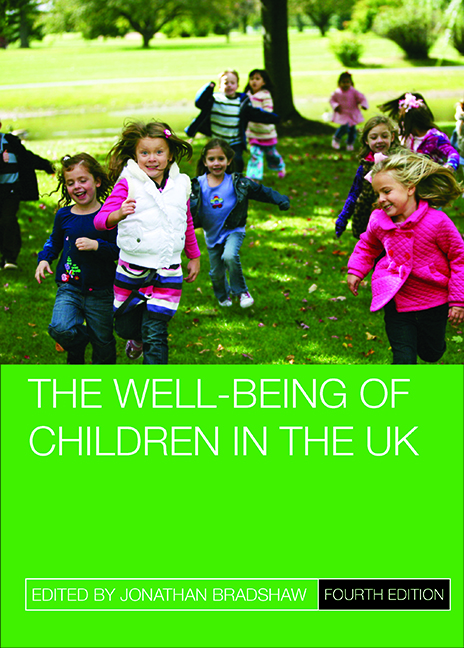Book contents
- Frontmatter
- Contents
- List of figures and tables
- List of abbreviations
- Notes on contributors
- Acknowledgements
- One Introduction
- Two Demography of childhood
- Three Child poverty and deprivation
- Four Physical health
- Five Subjective well-being and mental health
- Six Education
- Seven Housing and the environment for children
- Eight Children’s time and space
- Nine Children and young people in care and leaving care
- Ten Child maltreatment
- Eleven Childcare and early years
- Twelve Children, crime and correction
- Thirteen Conclusion
- Bibliography
- Index
Two - Demography of childhood
Published online by Cambridge University Press: 01 September 2022
- Frontmatter
- Contents
- List of figures and tables
- List of abbreviations
- Notes on contributors
- Acknowledgements
- One Introduction
- Two Demography of childhood
- Three Child poverty and deprivation
- Four Physical health
- Five Subjective well-being and mental health
- Six Education
- Seven Housing and the environment for children
- Eight Children’s time and space
- Nine Children and young people in care and leaving care
- Ten Child maltreatment
- Eleven Childcare and early years
- Twelve Children, crime and correction
- Thirteen Conclusion
- Bibliography
- Index
Summary
Key statistics
• In 2013 there were 10.44 million children under the age of 16 in the UK.
• The majority of children are White (84%). The largest group of ethnic children are Asian, forming 8% of the child population.
• In 2014 23% of children were living in a lone-parent family.
• The UK has the highest proportion of children living in lone-parent families in the European Union (EU).
Key trends
• The number and proportion of children has been declining, especially in Scotland. Children made up 16.4% of the UK population in 2013.
• There is projected to be a sharp rise in the number of young adolescents (aged 10-19) in the next 10 years.
• Rates of childlessness have increased, from 10% for women born in 1945 to 20% for women born in 1965. Average family size is falling, and there are more one-child families.
• Fertility increased after 2003, mainly as a result of migration, but the increase stopped in 2009 and has not reached replacement level.
• The proportion of households with children has fallen, from 39% in 1977 to 30% in 2013.
• There has been a persistent, sharp fall in births to unmarried teenage mothers since 1976.
• The number of births within marriage/civil partnerships has undergone a steady decline, which was mirrored by an increase in the number of births within cohabiting relationships.
• The proportion of children living with parents in cohabiting partnerships has doubled over the last 18 years.
• Compared to 1977, there are now 7% fewer homes containing a couple and two or more children.
Key sources
• Office for National Statistics (ONS)
•Family Resources Survey
• Labour Force Survey
• Millennium Cohort Survey
• European Union Statistics on Income and Living Conditions (EU-SILC)
Introduction
This chapter reviews recent developments in the demography of childhood in the UK as well as children's changing social relationships within the family. It describes the demographic characteristics of children – their numbers, gender, age, ethnicity, geographical location and family composition. It presents comparisons of UK children with those of other countries, and reviews evidence of the impact of family structure on child well-being.
- Type
- Chapter
- Information
- The well-being of children in the UK (4th edition) , pp. 13 - 30Publisher: Bristol University PressPrint publication year: 2011



